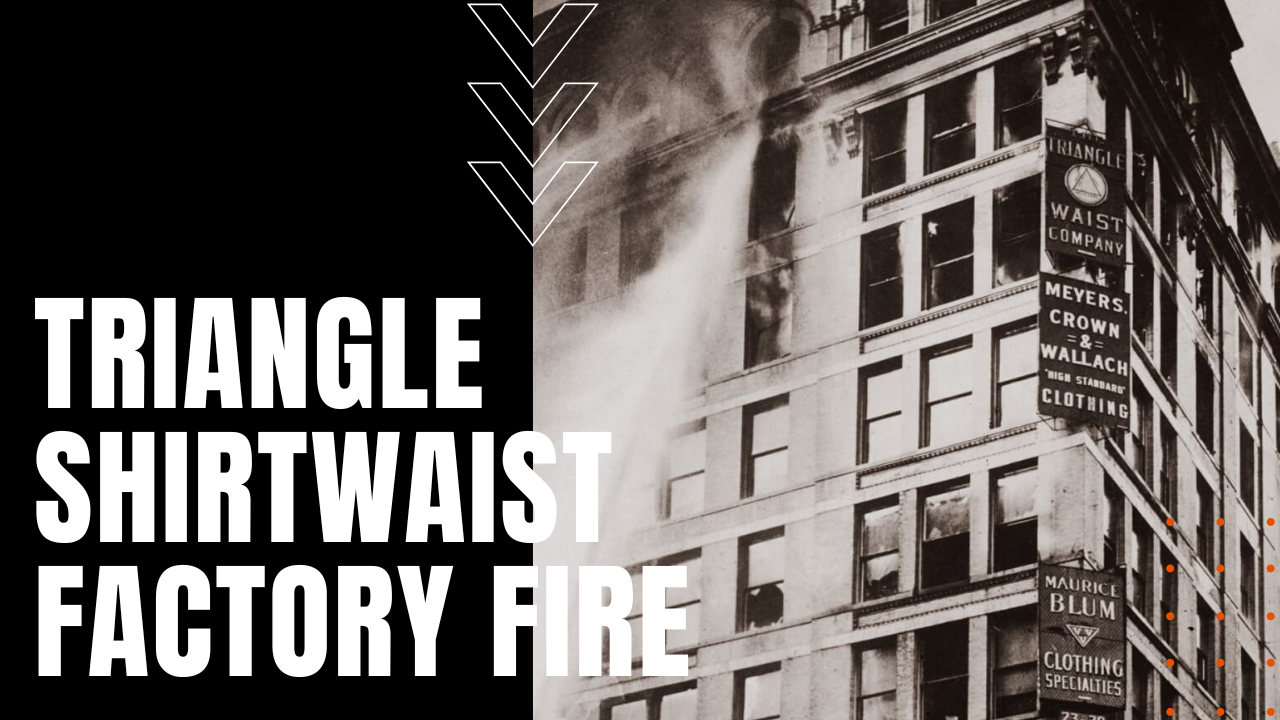Triangle Shirtwaist Factory Fire

Owned by sweatshop bosses Max Blanck and Isaac Harris, the Manhattan-based Triangle Shirtwaist Company was housed in the top three floors of the Asch Building, on the corner of Greene Street and Washington Place, employing mostly young immigrant women who worked 12 hours a day, seven days a week, all for the abusively meager pay of $15 per week.
Sweatshop Bosses’ History of Factory Fires
With a long history of suspicious fires in their other factories, potentially set to collect on large fire insurance policies, Blanck and Harris went out of their way to resist fire safety measures at their Triangle Shirtwaist Company, in case they needed another revenue-generating fire.
Of the four elevators accessing the factory floors, only one was operational, and of two stairways down to the street, one was locked from the outside to prevent theft, while the other stairwell door opened inward.
The Triangle Shirtwaist Fire
On Saturday afternoon, March 25th, 1911, 600 workers were crammed into their sewing stations when a fire broke out in a rag bin.
A manager attempted to put it out, only to discover that the fire hose had rotted, while the valve was rusted shut. Panic ensued, as a long line of workers queued before an elevator that held only 12 passengers at a time. When it broke down amidst the heat and flames, terrified workers plunged down the shaft to their deaths.
Others fled down the stairwells, only to burn to death when they reached the inoperable outside doors. Others jumped to their death from inadequate fire escapes, falling on fire hoses that made it difficult for firefighters to fight the flames.
Within 18 minutes the fire was over, leaving 146 innocent workers dead, while Blanck and Harris and other top management escaped to the rooftop and jumped to safety on the roofs of adjoining buildings.
Triangle Shirtwaist Factory Fire Aftermath
In the wake of the tragedy, protests over worker conditions resulted in an April 5th march on New York’s Fifth Avenue, with more than 80,000 in attendance, while city officials passed the Sullivan-Hoey Fire Prevention Law, which called for massive changes to workplace fire prevention measures.
Blanck and Harris were brought up on manslaughter charges in the face of overwhelming evidence of neglect, they were ultimately acquitted by a grand jury.
To settle the many lawsuits against them, Blanck and Harris eventually paid out compensation to the victim’s families of $75 per life lost, a mere fraction of the $400 per death settlement they received from their insurance company, making the Triangle Shirtwaist Fire, an early wakeup call for union organizers throughout the United States.
